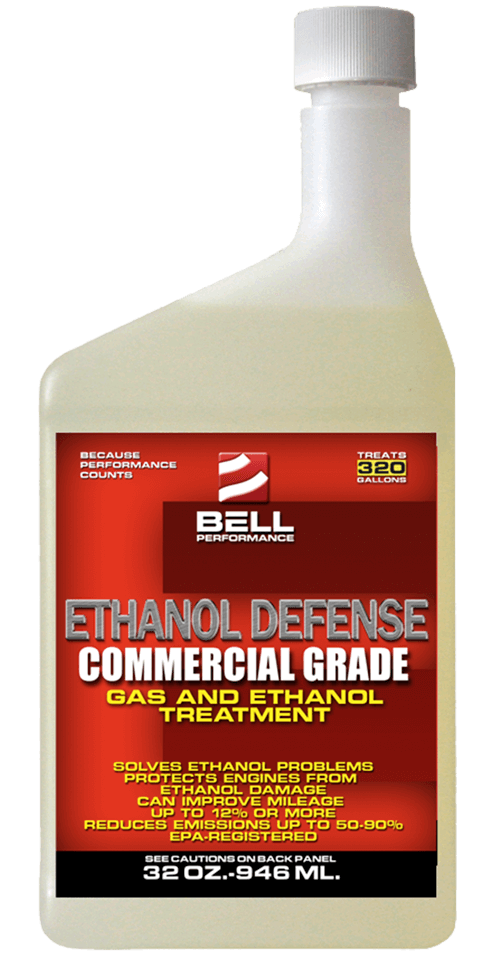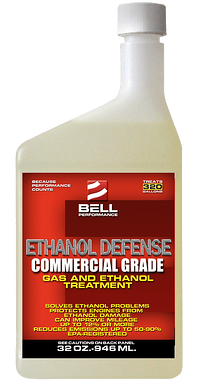Ethanol Defense in New York
A new customer in Woodside, New York had this to say about Ethanol Defense:
4 min read
Bell Performance : Mar 12 2013

Bell Performance has had the pleasure of having a lot of different kinds of customers over the years. Ever since we added some improvements to the web site making it easier for the users of our products to tell us about their experiences, we've been hearing more positive stories about what they've seen out on the open road.
 In January, someone with some fairly good automotive technical credentials contacted us and, over the course, of several weeks, relayed some details about his family's experience with Ethanol Defense and what it did for them:
In January, someone with some fairly good automotive technical credentials contacted us and, over the course, of several weeks, relayed some details about his family's experience with Ethanol Defense and what it did for them:
I'm currently a Professor of Automotive technology, about to retire after 43 years. I have had my own repair business for 14 years, then worked as an instructor and training center manager for General Motors, and more recently established an Automotive Forensic Investigations Company for the past 13 years. I heard about Ethanol Defense from the Antique Automobile Club of America, of which I have been a member since 1969, and am the original owner of a 1971 Chevrolet Corvette LT-1 convertible. I also have a 1937 Buick Series 40 trunk back sedan.
At the college we have sponsored a 1967 Camaro drag car and have overseen several restorations over the 40+ years of the Automotive Program existence. We currently operate a 40,000 square foot facility comprised of 12 working bays, engine overhaul lab, transmission overhaul lab, and 4 smart classrooms that include lifts for demonstration purposes.
I couldn't wait to get your product for testing. There are many staff and student waiting to see the results of my experiment.
I began my experiment last week by filling my fuel tank and checking the fuel economy. It averaged 24.5 mpg. Today I put in 4 ounces of the Ethanol Defense as instructed for first applications and then filled the fuel tank. Right away I noted improved idling and quicker response to the accelerator pedal. I have a 2009 Chevrolet Impala, 3.5L V6 with 4-speed automatic transaxle. It is not a flex fuel engine and requires regular fuel, 87 octane, 5W-30 enigne oil. New Jersey uses E10 fuel year 'round and has for many years. So far, the results today are an improvement in the fuel economy to 27.1 mpg and the engine performance. As I continue to use the fuel next week, I'll see if there are further improvements. So far, so good. I'll keep you informed/apprised of the experiment. I'll also be testing your product in my 2002 Chevrolet Silverado extended cab, 4WD, series 1500, 5.3L V8, 4-speed automatic transmission.
Here's an update on the use of your Ethanol Defense product.
As you might remember, at last writing, the fuel economy attained was 27.1. The car sat for a couple of days and then my wife drove it to Maine, a 458 mile trip. After driving for a couple of hours, she called and commented on how improved the response to the accelerator pedal was and the quick acceleration compared to how it used to be.
At the halfway point of the trip, where we stop to refuel, she checked the fuel economy. It was 29.4 mpg which is unheard of for winter time driving. Later she called and said the mileage had dropped off a bit to 28.7 mpg. I asked if she had the seat warmer on as she has a bad back. She said yes. That circuit draws about 15-18 amps. Knowing that for each 10 amps of current draw on the charging system causes a drop of 0.4 mpg, I associated the drop to the extra electrical load on the generator.
She called again when she arrived at our house in Maine and reported that the fuel economy was 29.1 mpg for the total trip average. I generally get about 31-32 mpg in the summer on this trip and never gets better than about 25 mpg in the winter. So there was a definite change in fuel economy along with better accelerator response with the addition of your product.
Realize that at the halfway point she added 10% ethanol fuel to about a half tank of treated fuel which diluted the original mixture at the start of the trip and was used for the second half of the trip. Now when she returns, she'll start out by filling the tank again without treating the fuel. We'll see how the fuel economy goes with that return to what will be a virtually untreated fuel mix. I'll let you know the results later this week.
Here's a followup to the Maine return trip. The fuel tank was filled, further diluting the treatment. Fuel economy dropped to 25.4 mpg at the halfway point where the tank was filled again, even further diluting the treatment. At the halfway point, fuel economy was 27.2 mpg. By the time my wife arrived in NJ, she again filled the tank, about half tank, and the mpg registered was 26.1.
It's very clear that dilution of the treated fuel directly resulted in a reduction in mpg.
On 2-19-13, I checked the fuel economy again after lowering the fuel level in the tank to near empty, (according to the gauge). The mileage at that point was 25.8 mpg. I treated the remaining fuel with 2 oz. of ethanol defense. After filling the tank with E10, I drove to work approximately 30 miles. Upon arrival at work, the fuel economy was 28.2 mpg.
One of my students has also tried ethanol defense and has noted a large improvement in performance. He has not yet calculated his fuel economy but said he will do so.
There's no question in my mind that Ethanol Defense does what you have intended and said. The next step is to try to determine if it is economical to use, in other words, cost versus savings.
So in the end, the automotive professor and his wife were getting 3-4 extra miles per gallon with Ethanol Defense. This translates to about a 10-14% improvement.
What does that look like in terms of Return on Investment? There are several ways you can calculate this, but you start with a few essential data points: Ethanol gas costs $3.80 per gallon (approximately), a 32 oz bottle of Ethanol Defense costs about $28.00 and it treats 320 gallons of gas. If they're getting 3 extra mpg and they have a 15 gallon gas tank, that's 45 extra miles per tank. If they're getting 28.8 mpg fuel economy, those extra miles per tank mean they're saving about 1.6 gallons of gas per tank, which saves them $6.08 per tank. But they only used 2 ounces of Ethanol Defense at most, at a cost of $1.75.
That means for every dollar they spend on Ethanol Defense, they're getting back a minimum of $2.47 in extra savings, over and above getting back everything they spent on the product. Their "cost-benefit ratio" is 3.47 to 1.
So it definitely pays them to use Ethanol Defense.
A new customer in Woodside, New York had this to say about Ethanol Defense:
Some great words on Ethanol Defense from a new customer in Fort Wayne, Indiana:
Famous southern hospitality was in order when we got a note about Ethanol Defense from a customer in Atlanta, Georgia: